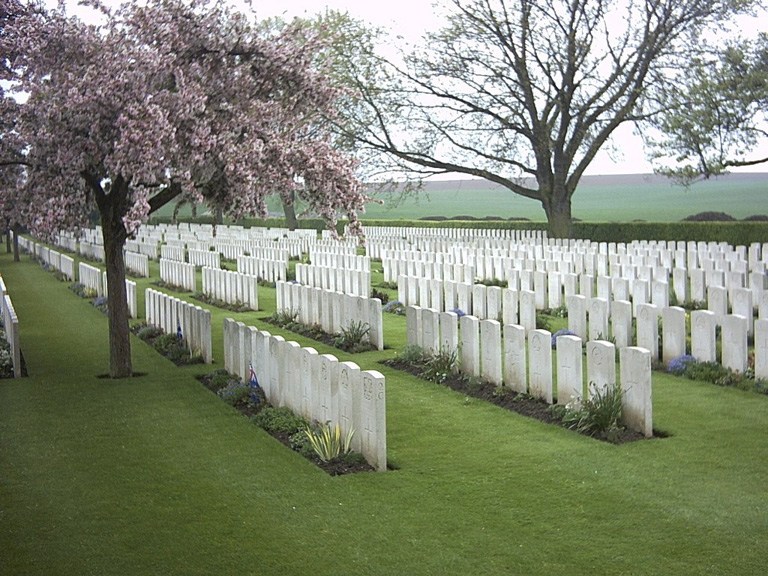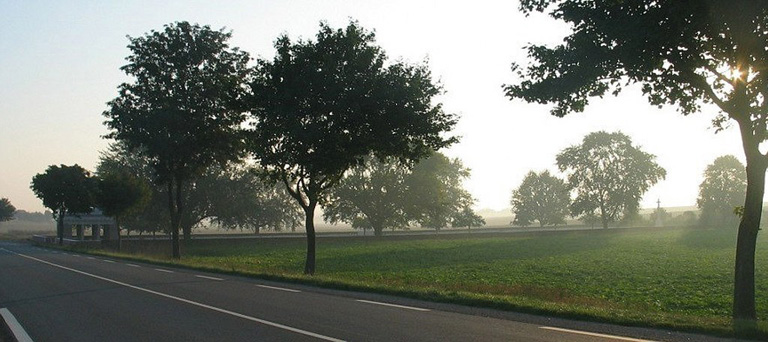Warlencourt British Cemetery
- Country France
- Total identified casualties 1689 Find these casualties
- Region Pas de Calais
- Identified casualties from First World War
- GPS Coordinates Latitude: 50.08079, Longitude: 2.79911
Location information
Warlencourt British Cemetery lies on the east side of the D929, to the south-east of Warlencourt village and 5 kilometres south-west of Bapaume. CWGC signposts on the D929 give advance warning of arrival at the Cemetery.
Visiting information
Wheelchair access to the site is possible, but may be by alternative entrance. For further information regarding wheelchair access, please contact our Enquiries Section on 01628 507200.
History information
Warlencourt, the Butte de Warlencourt and Eaucourt-L'Abbaye were the scene of very fierce fighting in 1916. Eaucourt was taken by the 47th (London) Division early in October. The Butte (a Roman mound of excavated chalk, about 17 metres high, once covered with pines) was attacked by that and other divisions, but it was not relinquished by the Germans until the following 26 February, when they withdrew to the Hindenburg Line.
The 51st (Highland) Division fought a delaying action here on 25 March 1918 during the great German advance, and the 42nd (East Lancashire) Division recaptured the ground on 25 August 1918.
The cemetery was made late in 1919 when graves were brought in from small cemeteries and the battlefields of Warlencourt and Le Sars.
The largest burial ground moved into this cemetery was:-
HEXHAM ROAD CEMETERY, LE SARS, on the West side of the Abbey grounds. (Hexham Road was the name given to the road leading from Warlencourt to Eaucourt. Le Sars was captured by the 23rd Division on 7 October 1916, and again by the Third Army on 25 August 1918.) This cemetery was used from November 1916 to October 1917, and contained the graves of 17 soldiers from the United Kingdom and 13 from Australia.
The cemetery now contains 3,505 Commonwealth burials and commemorations of the First World War. 1,823 of the burials are unidentified but there are special memorials to 55 casualties known or believed to be buried among them. Other special memorials commemorate 15 casualties buried in Hexham Road Cemetery, whose graves were destroyed by shell fire.
The cemetery was designed by Sir Edwin Lutyens.



